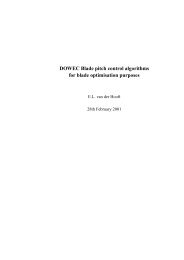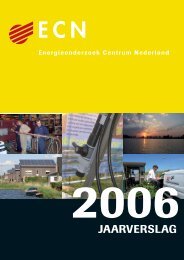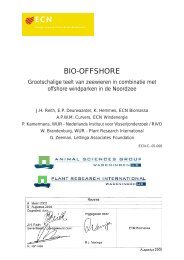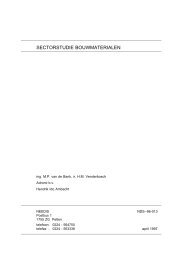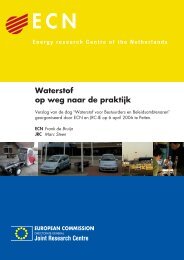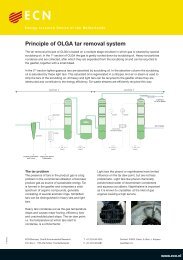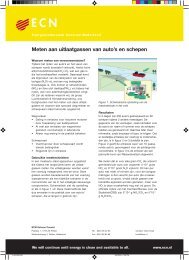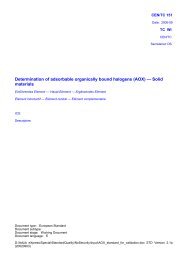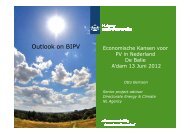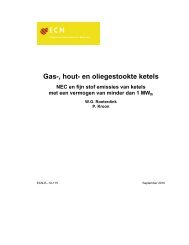PDF format (503 kB) - ECN
PDF format (503 kB) - ECN
PDF format (503 kB) - ECN
You also want an ePaper? Increase the reach of your titles
YUMPU automatically turns print PDFs into web optimized ePapers that Google loves.
Material efficiency improvement for European packaging in the period<br />
2000 - 2020<br />
Marko Hekkert, Louis Joosten and Ernst Worrell<br />
Utrecht University, Department of Science, Technology and Society,<br />
Padualaan 14, NL-3584 CH Utrecht, The Netherlands<br />
Abstract<br />
In this paper the current material consumption for packaging making in Europe is described. Per packaging<br />
type (food bottles, non-food bottles, boxes for primary packaging, flexible packaging, carrier bags, industrial<br />
boxes and pallets) options for improved material efficiency are described. The options are in the field of using<br />
thinner materials, using less material by changing the shape of the package, using recycled material and using<br />
refillable packages. This paper shows that many option are available to reduce the future material input for<br />
packaging and that a reduction of CO2 emissions by this sector with a factor 2 is possible. A substantial share of<br />
this reduction can be achieved without any changes in consumer behavior.<br />
Introduction<br />
Packaging is an important product category from a CO2 point of view. In Table 1.1 a first order estimate for the<br />
energy and CO2 balance for packaging materials are stated. The total direct and indirect CO2 emission of 109<br />
Mtonne for all packaging materials can be compared to the current Western European emission of approximately<br />
3300 Mtonne [Gielen, 1997]. The packaging materials that are analyzed in this report represent 3.3 percent<br />
of the total Western European CO2 emission or about 10% of European industrial CO2 emissions. Plastics,<br />
paper and metal are the most important contributors to the CO2 emissions from packaging.<br />
This paper describes possible material efficiency options by the packaging industry and the material processing<br />
industry that may lead to reduced CO2 emissions in Europe. Material efficiency is defined in this paper as the<br />
amount of primary material that is needed to fulfill a specific function. Material efficiency improvement allows<br />
the same function to be fulfilled with less material. At several stages in the life cycle intervention is possible in<br />
order to increase the material efficiency over life cycle. Figure 1.1 shows these efficiency improvement measures<br />
and at which stages in the life cycle they intervene. The standard life-cycle is presented within the box.<br />
The efficiency improvement measures that can be applied are depicted outside the box.<br />
Even though in this paper we focus on efficiency improvement of packaging materials we need to take into account<br />
that packaging is needed for the protection and marketing of the packaged products. In many cases this<br />
paper states the technical possibilities but before actual implementation a good understanding of the purpose of<br />
packaging material is needed. Savings on packaging material may in some cases lead to less efficient product<br />
use which may even lead to greater consumption of energy per consumption unit than the original situation.<br />
However, arguments like these should not prevent that resources are used in the most efficient way possible.<br />
This paper investigates which packaging options are suitable to reach an efficiency improvement with a factor 2<br />
in 2020 and also if a factor 10 is possible on the long run (2050).



